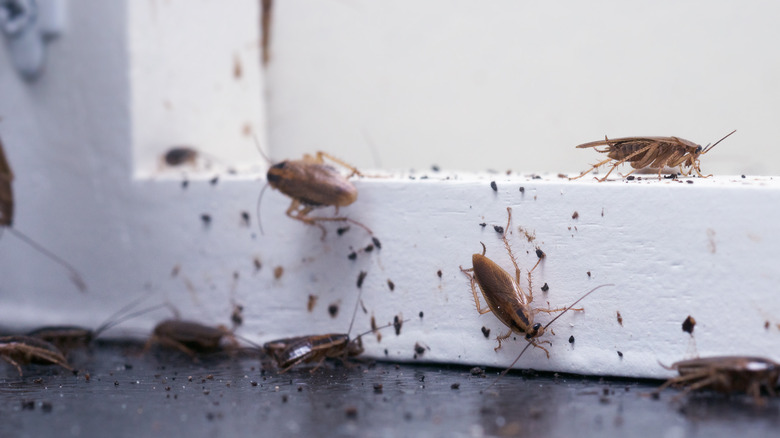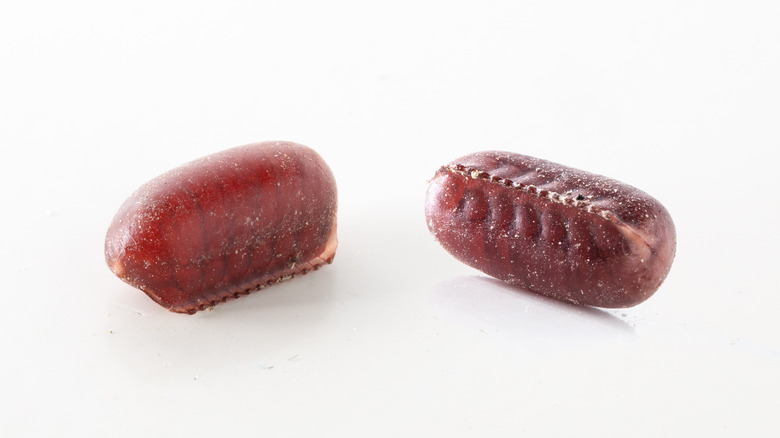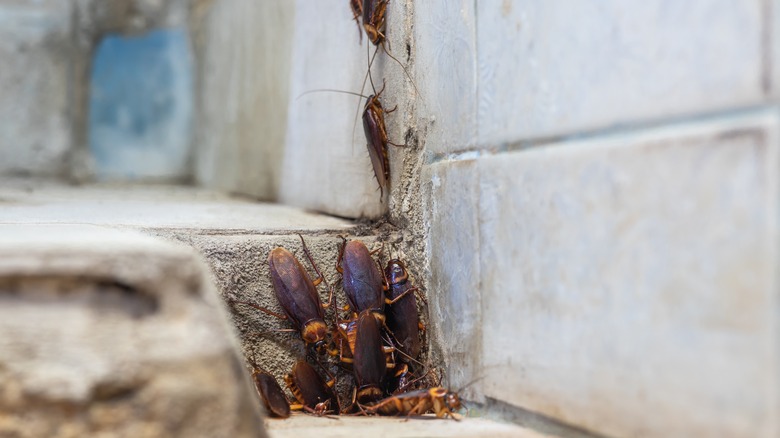The First Thing You Need To Do If You Find Cockroach Eggs In Your Home
If you believe you have an infestation of some of the most loathsome pests on the planet, it's important to know the common warning signs of a cockroach infestation. If you see signs like discarded body parts or insect droppings, you may want to figure out how to get rid of cockroaches forever. Treating live roaches often involves calling a pest control professional or making use of DIY sprays and dusts. Those items work on the adult insects as they're moving around or hiding in nests. However, what should you do if you notice cockroach eggs in the home? These also need elimination, as the nymphs can hatch and begin to grow into full-size insects, even if the exterminator killed all of the adults, meaning you could end up with a new infestation all over again.
If you see eggs in your home, start by removing or crushing any of them that you see. You cannot just vacuum them and expect that to destroy the eggs, because they have an extremely hard casing that protects them, called the ootheca capsule, so you need to crush them before using a vacuum on them. A pest control exterminator can help you destroy the capsules as well through treatment methods. As you vacuum these egg pieces and any extra body parts that you find in the same area, make sure the vacuum cleaner has a HEPA filter on it to limit the debris from the cockroaches that end up in the air.
Everything you need to know about cockroach eggs
Some people may misidentify cockroach eggs and the ootheca casing that covers them, meaning they think they have an infestation when they actually don't. It's important to understand how these eggs look and where you may find them, so you can identify them properly. The eggs from these insects are extremely small, so it can be challenging figuring out exactly what you're seeing. A typical ootheca capsule is about 0.25 inches long and has an oval shape. However, some species of these insects can create ootheca as small as 0.06 inches in length.
Typically, brown-banded and German cockroaches have the smallest ootheca, and they tend to have a brown or light brown color. American and Oriental cockroaches create larger ootheca that can be dark brown, black, or reddish-brown. Depending on the species of insect, the capsule can contain up to 50 eggs, but most have a little more than a dozen eggs per capsule. An immature roach may hatch after roughly a month. It then can take anywhere from a couple of months to a couple of years for the insect to become a full-sized adult, depending on the species, meaning you could have an infestation well after noticing the capsules.
Some females will carry the capsules containing the eggs until they hatch, while others drop them or use a sticky substance, usually saliva, to attach them to a surface where they remain until the bugs are able to hatch.
Where to search for cockroach eggs and ootheca capsules
Cockroaches look for a safe place to either drop or attach their eggs. This often is in a similar place to where they like to live and breed, such as dark places away from human activity that have some dampness and that are close to sources of food. Different species of cockroaches may try to place their eggs in different locations than other roach species. Generally, however, focus on places like the kitchen or a damp crawl space or basement. Look underneath the kitchen sink, near trash cans, behind the refrigerator, near basement drains, and inside cabinets that may have food crumbs. Some ootheca appear in crevices in the wall, inside furniture, behind loose baseboards, and underneath pieces of wood.
Although it's rare, you may find the ootheca capsules inside dresser drawers, mixed inside your clothing. However, it's far more likely to potentially find these pests' eggs inside an old cardboard box that has clothing in it that's tucked in a damp corner of the basement for storage that no one has touched in a long time. Cockroaches focus on keeping their eggs away from human activity.
Should you find an empty capsule in your home, the insect has already hatched and may be starting its journey to adulthood. Go ahead and vacuum up the remaining parts, but you may also need to call an exterminator to see if any immature pests are living inside your home.


